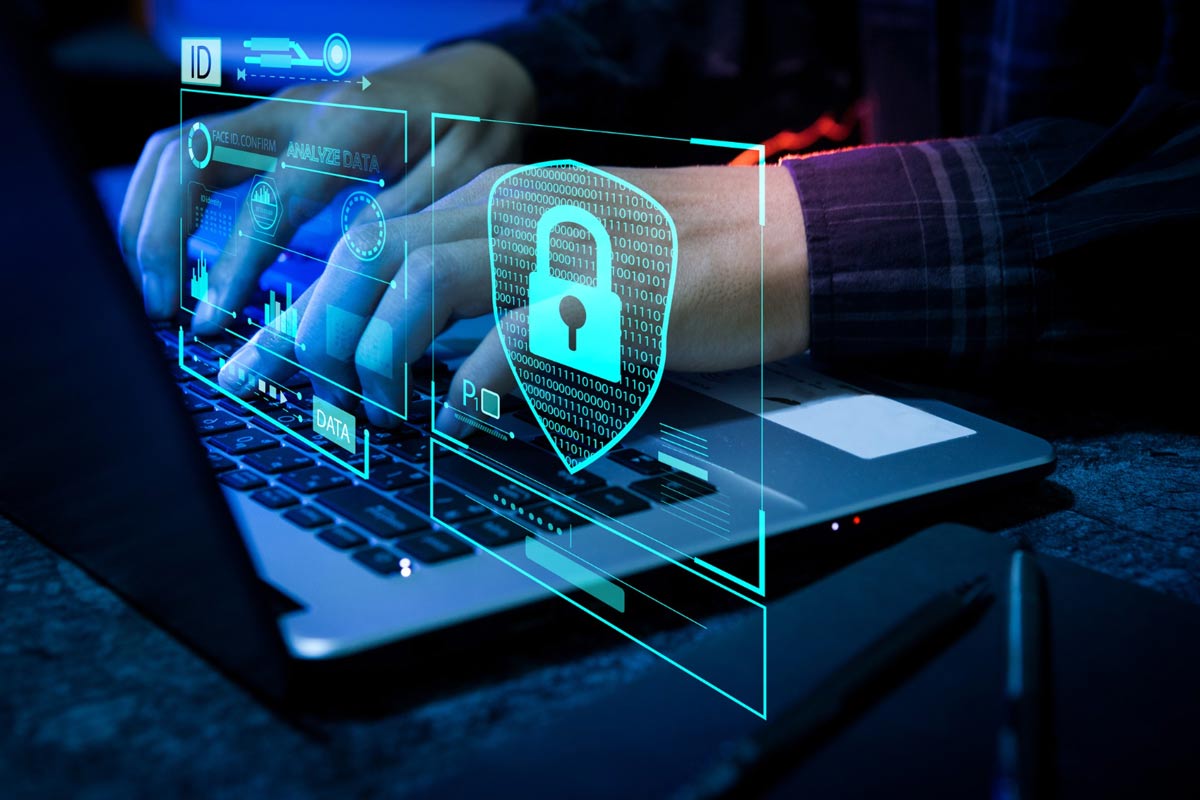
How to Achieve CMMC Level 3 Requirements in CMMC 2.0
Update: As of November 10, 2025, the CMMC has gone into full effect. Federal contractors must now demonstrate full compliance with CMMC as part of all of their contracts going forward. If your organization needs help meeting CMMC requirements, Red River can help. Contact us today! In the meantime, we hope you enjoy our blog explaining how you can achieve level 3 within the CMMC 2.0 framework.
Contractors and subcontractors working in the military industrial base have access to potentially lucrative government contracts. As the latest cybersecurity mandate moves forward — CMMC 2.0 — organizations handling, storing or transmitting sensitive digital information will be tasked with meeting new and more stringent regulations.
Some of the most complex regulations focus on organizations that utilize Classified Unclassified Information (CUI), among other sensitive data. Given the fact that the White House and the U.S. Department of Defense (DoD) proposed a fiscal year 2024 budget north of $842 billion, it may be in your company’s best interest to take proactive measures and achieve these CMMC 2.0 requirements.
How Did We Arrive at CMMC 2.0?
The first version of Cybersecurity Maturity Model Certification dates back to the previous White House administration. Now called CMMC 1.0, the DoD released the policy in January 2020. It wisely sought to bring wide-reaching contractors under a single cybersecurity policy umbrella. Prior to CMMC, businesses followed various information protection guidelines laid out in the Federal Acquisition Regulation and Defense Federal Acquisition Regulation Supplement, among others.
Under the proposed CMMC 1.0 mandate, organizations were required to adhere to one of five cyber hygiene levels. Many of the 300,000 organizations in the military defense supply chain needed to earn certification. However, a change at the White House prompted a review and revision of the information security policy. In November 2021, version 2.0 was announced in the Federal Register, and several critical changes were outlined.
“The CMMC framework is designed to protect sensitive unclassified information that is shared by the Department with its contractors and subcontractors and provide assurance that Federal Contract Information (FCI) and Controlled Unclassified Information (CUI) will be protected at a level commensurate with the risk from cybersecurity threats, including Advanced Persistent Threats,” according to a DoD statement published in the Federal Register. “Under the CMMC program, DIB contractors will be required to implement certain cybersecurity protection standards, and, as required, perform self-assessments or obtain third-party certification as a condition of DoD contract award.”
Perhaps the most important CMMC changes, in terms of operating a business, are the reduction from five to three maturation levels and third-party certifications. If your organization comes in contact with highly sensitive DoD information, wholesale cybersecurity changes may be needed.
What is CMMC Level 3?

Level 3 has been dubbed “expert” cybersecurity because it tasks contractors, subcontractors, researchers and others with building a robust defensive posture. Comparable to Level 5 in the first version, it emphasizes risk mitigation and deterrence of some of the world’s most prolific hackers.
Known as “Advanced Persistent Threats” to professionals in the military and cybersecurity fields, business leaders might want to think of them as the most skilled, well-funded and cunning digital thieves, bar none. This class of cybercriminal typically works for enemy regimes trying to uncover America’s national security secrets and initiatives. Other top-tier hackers steal sensitive data and sell it to the highest bidder, usually a rogue country. In order to prevent data breaches and digital information theft, these rank among the anticipated CMMC level 3 requirements.
- Access Control: Entities must possess the ability to transmit information between domains securely. Employing encryption software typically satisfies this requirement.
- Cybersecurity Awareness Training: Almost 90 percent of all data breaches are the result of human error. This astonishing statistic is why CMMC 2.0 tasks Level 3 contractors with providing ongoing cybersecurity awareness training for employees. Only by knowing the telltale signs of a phishing scheme, social engineering ploy or malware-laced file can frontline workers help prevent hacks.
- Incident Response: Advanced persistent threats have the chops to hack into even the most secure networks. In recent years, even federal agencies such as the U.S. Treasury have been breached. Understanding that clever hackers may eventually find a security weakness, the ability to respond and repel cybercriminals is essential. CMMC Level 3 mandates having an actionable incident response plan.
All told, CMMC Level 3 operations can anticipate adhering to upwards of 110 National Institute of Standards and Technology protocols adopted by CMMC 2.0.
What are the CMMC Level 3 Requirements?
The DoD has been helpful enough to publicly outline the fundamentals for meeting the CMMC Level 3 requirements. For the purpose of enlightening decision-makers about ways to achieve Level 3 certification, the definition has been added to the DoD’s “Five Steps to Make Your Company More Cyber Secure.”
Educate People: Cybersecurity awareness training is an ongoing process that can turn vulnerable staff members into part of a hardened defense. It begins by educating people at every level of the organization on ways to recognize hacking schemes. Informational videos, online forums and sending company-wide alerts about emerging threats help develop a robust cybersecurity culture.
Implement Access Controls: The DoD suggests that companies limit user access to only the digital assets people require to perform tasks. This can be achieved by implementing a “zero trust” policy. Zero trust has nothing to do with how employers feel about their dedicated team members. It simply assigns access to legitimate user profiles based on need. Should a hacker learn someone’s username and password, the criminal will also face restrictions to CUI.
- Authenticate Users: Using multi-factor authentication is fast becoming a standard business practice. It requires people who log into a network to receive a code from a secondary source and enter it before access is approved. By sending the code to a different device, bad actors get frustrated.
- Monitor Physical Space: It’s important to keep in mind that CMMC Level 3 requirements are designed to push back against some of the world’s most notorious hackers. The enemy states that employ them are more than willing to pull off an inside job. That’s why camera monitoring systems, audits, and USB device checks need to be in place.
- Update Security Protections: Achieving CMMC 2.0 certification typically involves upgrading existing firewalls, antivirus programs, encryption software and ensuring endpoint devices are adequately secure. Depending on the type of information you handle and network configuration, some level of overhaul will likely be needed.
Meeting and maintaining the CMMC Level 3 requirements calls for more than just a few tweaks to your attack surface or having employees watch a cursory cybersecurity awareness video. Organizations benefiting from DoD contracts usually benefit from enlisting the support of an accredited CMMC Third Party Assessment Organization, aka C3PAO, to shepherd you through the complicated process.
How to Meet the CMMC Level 3 Mandate

Industry leaders do their best work by focusing on the innovation and productivity the U.S. Armed Forces need. Cybersecurity tends to be a necessary distraction that cuts into such efforts. Delegating the CMMC 2.0 mandate to in-house IT technicians may seem like a viable solution. However, it may be unreasonable to ask managed IT staff members to research and implement facets of this advanced cybersecurity mandate.
By contrast, a C3PAO not only conducts a final CMMC audit and scores your cyber hygiene for the DoD. An expert firm can get involved early and help you overcome CMMC audit challenges. These include the following.
Conduct a Risk Assessment
The cybersecurity protocol is expected to require CMMC Level 3 participants to have a comprehensive risk assessment conducted and rated. This involves reviewing company systems, digital architecture, intrusion monitoring, threat-hunting capabilities and recovery.
The salient question is: Can you detect, track and purge threat actors in real time? A qualified C3PAO can conduct a preliminary risk assessment, provide a detailed report, and help close security gaps in accordance with CMMC 2.0.
Craft Cybersecurity Policy that Meets CMMC Level 3 Guidelines
Pentagon officials have no desire to allow patchwork cybersecurity in the military industrial base. That holds particularly true of high-level partners who require Level 3 security. That’s why having a written cybersecurity policy and disaster recovery policy in place is vital. Following a C3PAO’s penetration testing and risk assessment, your CMMC needs will become crystal clear.
With that perspective, and a detailed report, a plan of action can be tailored to your operation’s unique processes. The C3PAO can work diligently with key stakeholders to update an existing cybersecurity plan or craft one from scratch. Either way, you’ll be able to refer new hires to the policy and not lose ground when people retire.
Secure Your Authorization Boundary
In 2023, full-time remote talents comprised a reported 12.7 percent of the workforce. People who work from home some of the time made up another 28.2 percent. By the end of 2025, 32.6 million Americans are expected to work remotely. That means more than 40 percent of the workforce uses a laptop, desktop or another device outside the facility.
This modern reality also tends to expand authorization boundaries because team members may store, process or transmit CUI and other sensitive data from cell phones, iPads and other endpoint devices that have not been vetted. In such cases, your authorization has virtually no boundaries. While restrictions can be implemented and endpoint devices can be updated with enterprise-level cybersecurity, employing multi-factor authentication through the system can mitigate risk.
Leverage AI and Machine Learning
In terms of threat identification and response, AI has proven to be a valuable asset. Companies facing a CMMC audit can onboard AI and machine learning technologies to heighten their defenses. These advanced technologies provide 24/7 monitoring that ferret out seemingly slight anomalies. Changes in platform usage and even differences in keyboard timing can trigger an alert. An expert cybersecurity firm can install these tools and give you the advanced warning necessary to protect CUI, national security, and your place as a military contractor.
What are the Risks of CMMC 2.0 Non-Compliance?
The DoD is in the process of completing its CMMC 2.0 rulemaking procedures. As soon as it becomes a requirement, contractors and subcontractors can expect to see it in proposals. Those who have yet to comply could be passed over while competitors reap the benefits of the proposed DoD spending package estimated at more than $842 billion.
It’s also important to consider that a C3PAO CMMC audit generates a compliance score. Those with low ratings could also lose government work to companies that harden their cybersecurity and check all the CMMC boxes. The best solution is to take proactive measures and create a cybersecurity posture that exceeds the standards and defends the country.
Contact Red River to Start the CMMC Level 3 Process
The cybersecurity experts at Red River help businesses in the military industrial base meet the CMMC Level 3 requirements. If you are concerned about CMMC 2.0 deadlines or need clarification on your current cybersecurity defenses, call us today or fill out our online contact form. Let’s get the process started!

written by
Corrin Jones
Corrin Jones is the Director of Digital Demand Generation. With over ten years of experience, she specializes in creating content and executing campaigns to drive growth and revenue. Connect with Corrin on LinkedIn.




